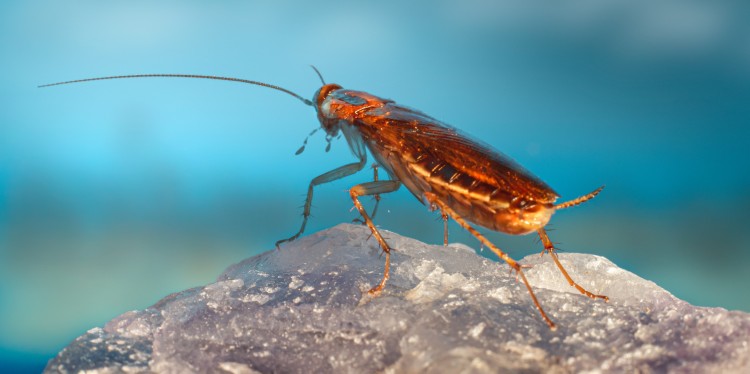
"Only a few of these species are pests"
It is a premiere: from 3 to 4 April, the first "International Conference on Blattodea Research" will take place in the castle of the University of Münster – the insect order "Blattodea" includes cockroaches and termites. The approximately 50 participants from Europe and other parts of the world, such as Japan, the USA and South Africa, come from various disciplines and are researching, for example, questions about the evolution, sociality and ecology of the Blattodea. Dr. Mark Harrison from the Molecular Evolution and Bioinformatics group at the Faculty of Biology at the University of Münster was one of the initiators and organisers of the conference. In an interview with Christina Hoppenbrock, he explains why cockroaches and termites are so exciting and what he hopes to achieve with the conference, which can also be attended virtually.
How did you get the idea to organise a conference on cockroaches and termites? Haven't such conferences already taken place?
No. As far as I know, there have not been any international conferences on the order of Blattodea, although there have certainly been some termite or cockroach meetings. We thought it would be an inspiring and very helpful experience to bring all these researchers together so that we can coordinate our efforts, sharing resources, skills and knowledge, to learn more about this fascinating clade.
Termites are associated by laymen with spectacular mounds in Africa and Australia. On the other hand, some cockroach species and wood-eating termites are considered pests ...
Yes, especially cockroaches get a pretty bad press. It is therefore difficult to generate interest in our work from people outside of biology. But research on pest species receives greater attention and thus financial support; it can contribute to improving human health and welfare. For me, however, cockroaches and termites are fascinating because they are so incredibly diverse. There are over 4000 cockroach and around 3000 termite species, which are globally prevalent and can be found in all ecosystems except marine environments. Only a few of these species are pests.

In my research group, we want to understand the evolution of complex traits. To do this, we use a combination of different tools. These include comparative genomics, i.e. comparing the entire genetic material of different organisms, and transcriptomics, i.e. comparing the 'active' genes transcribed into RNA.
For me, the evolution of eusociality is particularly exciting. This distinct form of social behaviour occurs in state-forming Hymenoptera - for example, in ants and honeybees. Independently of this, however, it has also arisen in termites, which are not closely related to Hymenoptera. This is a remarkable case of convergent evolution. The genomes will help us better understand how eusociality arose. Other traits we are studying in the Blattodea include wood-feeding and live-birth, so-called viviparity. The former has evolved several times within the Blattodea, not only in termites. Live birth, on the other hand, is only known in one cockroach species, the Pacific beetle mimic cockroach.
From your point of view, which discovery in the field of Blattodea research has been particularly exciting in recent years?
I think, especially, the phylogenetic placement of termites within Blattodea. Cockroaches and termites were previously treated as two distinct, monophyletic groups. However, it is now clear that termites are social cockroaches.
Are there any current trends in Blattodea research?
We and other groups are sequencing and assembling cockroach and termite genomes at a level of quality not previously possible, thanks to new, affordable sequencing technologies. I am convinced that these new data will allow us to better understand the evolutionary success and diversity of the Blattodea.
What's next - are you already planning the next conference?
This is the first ICBR. But we expect and hope that it will be the first of many. During the conference we will hold a general assembly with all attendees to discuss the initiation of a Blattodea society and to decide on the venue of the next ICBR.
